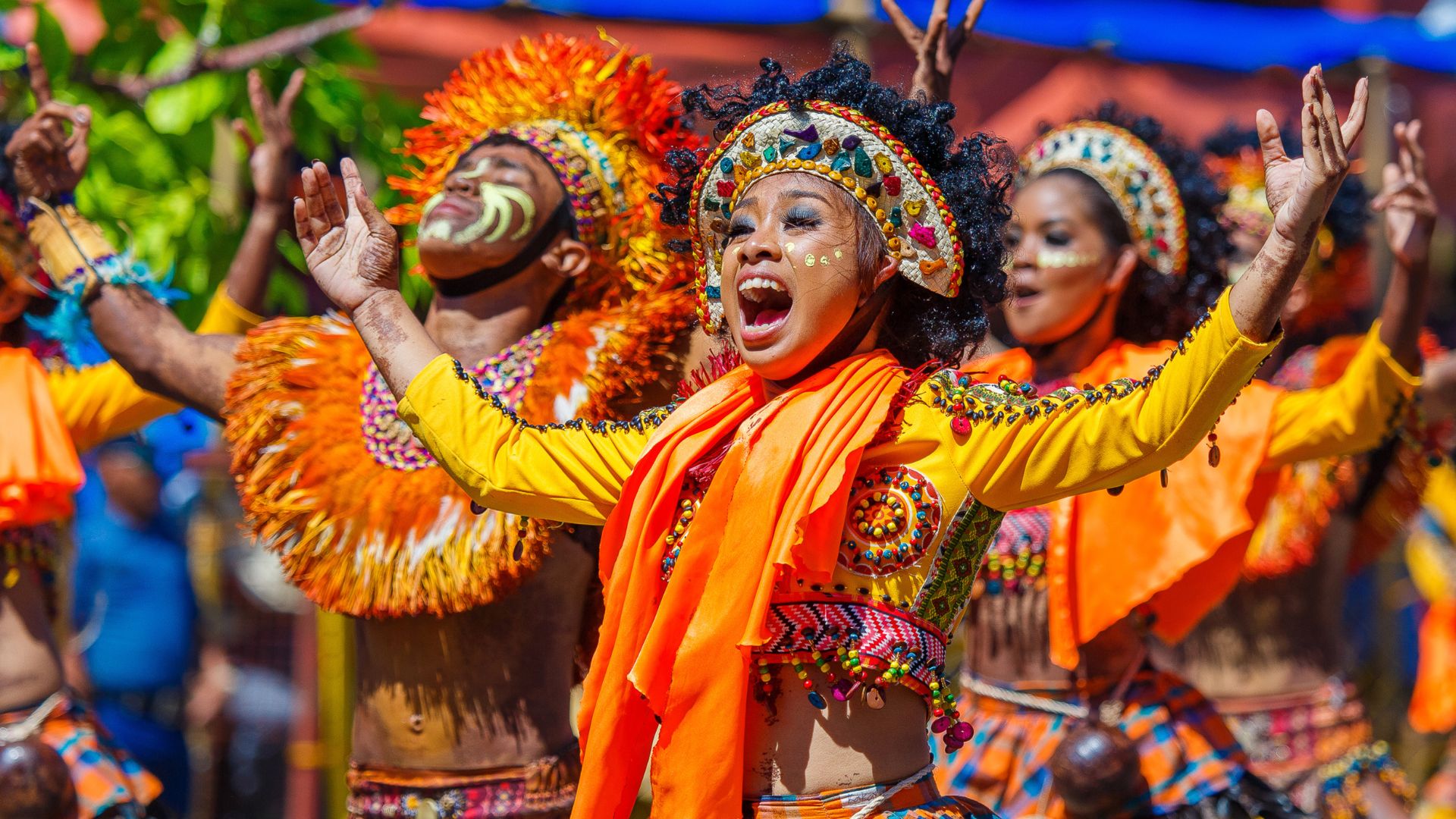Embarking on a journey to explore the diverse cultural tapestry of the Philippines is an exhilarating experience, especially when timed with the vibrant and colorful festivals that take place throughout the archipelago. If you’re eager to infuse your travel goals with a unique cultural flair, adding the Philippines Festival Hop to your bucket list is a must. Among the multitude of festivities that grace the nation, January stands out with a lot of festivities showcasing the rich history, traditions, and lively spirit of the Filipino people.
January 9 | Feast of Black Nazarene (Quiapo, Manila)

No discussion of January festivals in the Philippines is complete without mentioning the Feast of Black Nazarene in Quiapo, Manila. Celebrated on January 9th, this religious event attracts millions of devotees who participate in the grand procession, pulling a dark-skinned image of Jesus Christ through the streets. The procession is a display of intense faith and devotion, with barefoot devotees enduring the crowd to touch the Black Nazarene, believed to bring miracles and healing. The Feast of Black Nazarene is a profound spiritual experience that underscores the deep religious roots embedded in Filipino culture.
January 10 | Hinugyaw Festival (Koronadal City)

The Araw ng Koronadal, known as the “Hinugyaw Festival,” held on January 10 in Koronadal. Often hailed as the “Festival of Festivals,” it stands out as a jubilant homage to the diverse cultures that have thrived in the fertile valley of Koronadal for countless years. This cultural extravaganza brings together various communities, each contributing its unique heritage through colorful parades, traditional dances, and lively music. Participants don traditional costumes, showcasing the rich tapestry of Koronadal’s history and unity. The festival serves as a captivating fusion of traditions, fostering community spirit and providing both locals and visitors with a memorable and immersive experience that reflects the essence of Koronadal’s cultural diversity.
January 12-28 | Dinagyang Festival (Iloilo City)

Further down the map, Iloilo City hosts the Dinagyang Festival, another captivating celebration of Santo Niño. What sets Dinagyang apart is its dynamic street dance competition, where contingents compete with choreographed routines that depict the arrival of Malay settlers and their barter of goods with the indigenous Ati people. The festival’s infectious energy, combined with the elaborate costumes and intricate dance moves, draws crowds eager to witness this cultural spectacle.
January 15 | Pasungay Festival (San Joaquin, Iloilo)

The Pasungay Festival, held annually on January 15 in San Joaquin, Iloilo, unfolds as a spectacular and exhilarating event deeply rooted in local tradition. Celebrated every 3rd Saturday of January, this festival traces its origins to a hillside in one of the inland barangays, where farmers first witnessed the intense battle between two unleashed bulls, captivating the imagination of the community. Over time, it evolved into a popular entertainment feature during barangay fiestas, leading to the establishment of the Pasungay Festival during the municipal celebration. The highlight of the festival is the Bull Derby, where the best bulls from various barangays engage in friendly but competitive bouts, categorized by weight. This cultural spectacle not only showcases the strength and agility of these majestic animals but also fosters community unity and festive camaraderie.
January 15-24 | Ati-Atihan Festival (Kalibo, Aklan)

Following closely is the Ati-Atihan Festival in Kalibo, Aklan, known as the “Mother of All Philippine Festivals.” Rooted in pre-colonial history, this celebration honors the Sto. Niño and the indigenous Aeta people. The streets come alive with locals donning vibrant tribal costumes, covered in soot, and dancing exuberantly to the infectious beat of drums. The Ati-Atihan is a sensory overload, immersing participants in a sea of colors, music, and an infectious spirit of revelry.
January 19-21 | Sinulog Festival (Cebu City)

Kicking off the festive month is the world-renowned Sinulog Festival in Cebu City. Celebrated every third Sunday of January, this grand event pays homage to Santo Niño, the Holy Child Jesus. Pilgrims and revelers from all corners of the globe gather to witness the captivating street parade featuring elaborately costumed dancers moving to the rhythm of drumbeats and chants. The Sinulog Festival is not just a visual spectacle; it’s a profound expression of faith, unity, and cultural pride.
January 27 – February 4 | Pakwan Festival (Bani Pangasinan)

Bani Pangasinan proudly stands as the leading watermelon producer in Pangasinan, cultivating this succulent fruit in soils enriched with limestone, resulting in a unique and exceptional product. To showcase their agricultural prowess and boost tourism, the town annually hosts the Pakwan Festival.
The municipal plaza transforms into a vibrant spectacle with a centerpiece Pakwan fountain, surrounded by tables and chairs creatively designed as watermelons in the municipal park. Bani’s welcome arches proudly mimic the iconic fruit, symbolizing their pride in producing top-quality watermelons in the Philippines.
The Pakwan Festival features a variety of engaging activities, including a cook fest showcasing inventive watermelon recipes, a demo farm offering insights into watermelon cultivation, fruit carving displays, a mass eating event, and the lively Pakwan Carnivale—a street dancing competition. The grand parade further celebrates Bani’s rich agricultural heritage, making the Pakwan Festival a must-attend extravaganza blending culture, agriculture, and community spirit.
In January, the Philippines becomes a kaleidoscope of cultural celebrations, each festival offering a unique glimpse into the nation’s rich heritage. Whether you find yourself swept away by the rhythmic beats of the Sinulog Festival in Cebu, mesmerized by the tribal dances of Dinagyang in Iloilo, savoring the culinary delights of the Bangus Festival in Pangasinan, or participating in the profound spiritual experience of the Feast of Black Nazarene in Quiapo, each celebration promises a unique and unforgettable experience.
So, pack your bags, immerse yourself in the festivities, and create lasting memories as you celebrate the beauty and diversity of the Philippines.







